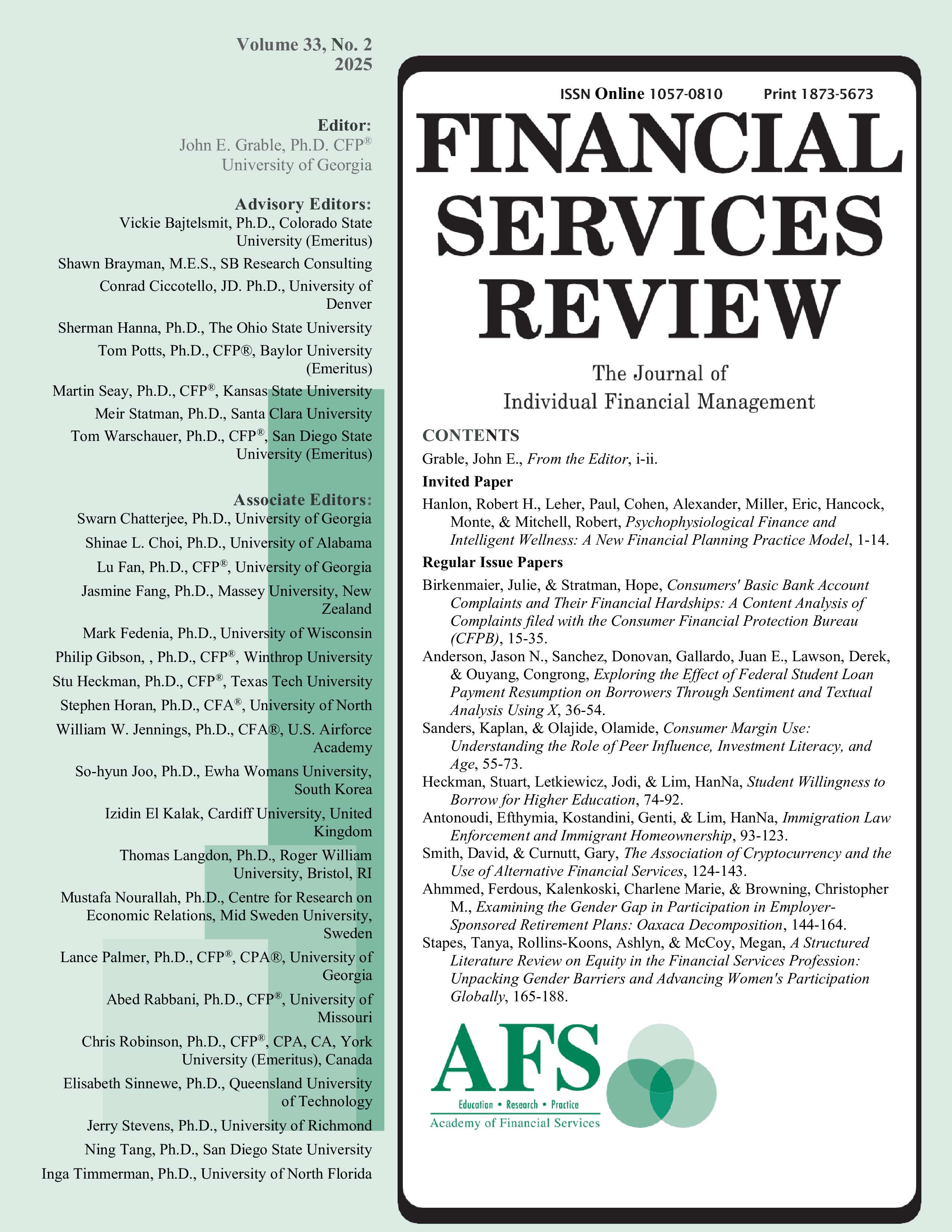A Structured Literature Review on Equity in the Financial Services Profession: Unpacking Gender Barriers and Advancing Women’s Participation Globally
DOI:
https://doi.org/10.61190/fsr.v33i2.4096Abstract
Women’s involvement and influence in the financial landscape have risen markedly, with a growing share of global wealth now under their control. If current projections prove accurate, women are expected to manage about 55% of the world’s wealth by 2030, fundamentally transforming the financial services and advisory industries. Alongside this shift, a more holistic, solution-focused, advice-oriented approach is emerging—departing from the historically product-centric, male-dominated financial sales industry of the past. Despite this progress, gender equity within financial services remains elusive. Women currently comprise only about 17% of financial advising professionals in Canada and the United States. Research consistently underscores the importance of gender diversity, noting that many female clients prefer advisors who understand their distinct needs. Yet systemic, cultural, and societal barriers continue to limit women’s full participation in the profession. This structured literature review examines these barriers, particularly within the realms of financial advising and planning. It also explores the implications for policymakers, practitioners, and researchers, offering strategies for employers and the broader profession to enhance organizational structures. Emphasis is placed on transparency and the development of policies and procedures that actively integrate a gendered perspective.
Downloads
Published
How to Cite
Issue
Section
License
Copyright (c) 2025 Tanya Staples, Ashlyn Rollins-Koons, Megan McCoy

This work is licensed under a Creative Commons Attribution-NonCommercial 4.0 International License.
Author(s) retain copyright and grant the Journal right of first publication with the work simultaneously licensed under a Creative Commons Attribution-NonCommercial 4.0 International License that allows to share the work with an acknowledgment of the work's authorship and initial publication in this Journal.
This license allows the author to remix, tweak, and build upon the original work non-commercially. The new work(s) must be non-commercial and acknowledge the original work.


